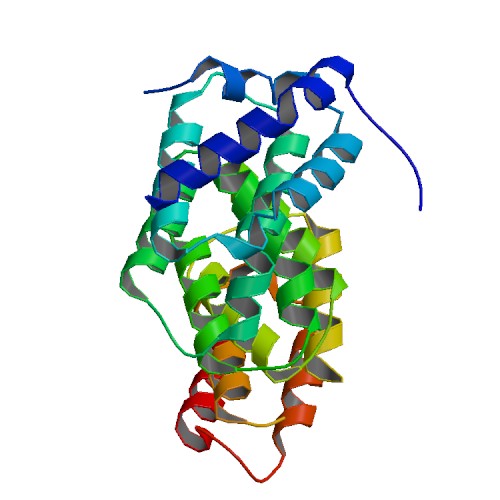FANCE
| Fanconi anemia, complementation group E | |||||||||||||
|---|---|---|---|---|---|---|---|---|---|---|---|---|---|
 PDB rendering based on 2ilr. | |||||||||||||
| |||||||||||||
| Identifiers | |||||||||||||
| Symbols | FANCE ; FACE; FAE | ||||||||||||
| External IDs | Template:OMIM5 Template:MGI HomoloGene: 11066 | ||||||||||||
| |||||||||||||
| RNA expression pattern | |||||||||||||
 | |||||||||||||
| More reference expression data | |||||||||||||
| Orthologs | |||||||||||||
| Template:GNF Ortholog box | |||||||||||||
| Species | Human | Mouse | |||||||||||
| Entrez | n/a | n/a | |||||||||||
| Ensembl | n/a | n/a | |||||||||||
| UniProt | n/a | n/a | |||||||||||
| RefSeq (mRNA) | n/a | n/a | |||||||||||
| RefSeq (protein) | n/a | n/a | |||||||||||
| Location (UCSC) | n/a | n/a | |||||||||||
| PubMed search | n/a | n/a | |||||||||||
Fanconi anemia, complementation group E, also known as FANCE, is a human gene.[1]
The Fanconi anemia complementation group (FANC) currently includes FANCA, FANCB, FANCC, FANCD1 (also called BRCA2), FANCD2, FANCE, FANCF, FANCG, and FANCL. Fanconi anemia is a genetically heterogeneous recessive disorder characterized by cytogenetic instability, hypersensitivity to DNA crosslinking agents, increased chromosomal breakage, and defective DNA repair. The members of the Fanconi anemia complementation group do not share sequence similarity; they are related by their assembly into a common nuclear protein complex. This gene encodes the protein for complementation group E.[1]
References
Further reading
- Joenje H, Lo ten Foe JR, Oostra AB; et al. (1995). "Classification of Fanconi anemia patients by complementation analysis: evidence for a fifth genetic subtype". Blood. 86 (6): 2156–60. PMID 7662964.
- Wegner RD, Henrichs I, Joenje H, Schroeder-Kurth T (1997). "Fanconi anemia complementation group E: clinical and cytogenetic data of the first patient". Clin. Genet. 50 (6): 479–82. PMID 9147877.
- Joenje H, Oostra AB, Wijker M; et al. (1997). "Evidence for at least eight Fanconi anemia genes". Am. J. Hum. Genet. 61 (4): 940–4. PMID 9382107.
- Waisfisz Q, Saar K, Morgan NV; et al. (1999). "The Fanconi anemia group E gene, FANCE, maps to chromosome 6p". Am. J. Hum. Genet. 64 (5): 1400–5. PMID 10205272.
- de Winter JP, Léveillé F, van Berkel CG; et al. (2000). "Isolation of a cDNA representing the Fanconi anemia complementation group E gene". Am. J. Hum. Genet. 67 (5): 1306–8. PMID 11001585.
- Medhurst AL, Huber PA, Waisfisz Q; et al. (2001). "Direct interactions of the five known Fanconi anaemia proteins suggest a common functional pathway". Hum. Mol. Genet. 10 (4): 423–9. PMID 11157805.
- Pace P, Johnson M, Tan WM; et al. (2002). "FANCE: the link between Fanconi anaemia complex assembly and activity". EMBO J. 21 (13): 3414–23. doi:10.1093/emboj/cdf355. PMID 12093742.
- Taniguchi T, D'Andrea AD (2002). "The Fanconi anemia protein, FANCE, promotes the nuclear accumulation of FANCC". Blood. 100 (7): 2457–62. doi:10.1182/blood-2002-03-0860. PMID 12239156.
- Strausberg RL, Feingold EA, Grouse LH; et al. (2003). "Generation and initial analysis of more than 15,000 full-length human and mouse cDNA sequences". Proc. Natl. Acad. Sci. U.S.A. 99 (26): 16899–903. doi:10.1073/pnas.242603899. PMID 12477932.
- Gordon SM, Buchwald M (2003). "Fanconi anemia protein complex: mapping protein interactions in the yeast 2- and 3-hybrid systems". Blood. 102 (1): 136–41. doi:10.1182/blood-2002-11-3517. PMID 12649160.
- Meetei AR, Sechi S, Wallisch M; et al. (2003). "A multiprotein nuclear complex connects Fanconi anemia and Bloom syndrome". Mol. Cell. Biol. 23 (10): 3417–26. PMID 12724401.
- Meetei AR, de Winter JP, Medhurst AL; et al. (2003). "A novel ubiquitin ligase is deficient in Fanconi anemia". Nat. Genet. 35 (2): 165–70. doi:10.1038/ng1241. PMID 12973351.
- Mungall AJ, Palmer SA, Sims SK; et al. (2003). "The DNA sequence and analysis of human chromosome 6". Nature. 425 (6960): 805–11. doi:10.1038/nature02055. PMID 14574404.
- Hussain S, Wilson JB, Medhurst AL; et al. (2004). "Direct interaction of FANCD2 with BRCA2 in DNA damage response pathways". Hum. Mol. Genet. 13 (12): 1241–8. doi:10.1093/hmg/ddh135. PMID 15115758.
- Wang X, Andreassen PR, D'Andrea AD (2004). "Functional interaction of monoubiquitinated FANCD2 and BRCA2/FANCD1 in chromatin". Mol. Cell. Biol. 24 (13): 5850–62. doi:10.1128/MCB.24.13.5850-5862.2004. PMID 15199141.
- Léveillé F, Blom E, Medhurst AL; et al. (2004). "The Fanconi anemia gene product FANCF is a flexible adaptor protein". J. Biol. Chem. 279 (38): 39421–30. doi:10.1074/jbc.M407034200. PMID 15262960.
- Gerhard DS, Wagner L, Feingold EA; et al. (2004). "The status, quality, and expansion of the NIH full-length cDNA project: the Mammalian Gene Collection (MGC)". Genome Res. 14 (10B): 2121–7. doi:10.1101/gr.2596504. PMID 15489334.
- Meetei AR, Levitus M, Xue Y; et al. (2004). "X-linked inheritance of Fanconi anemia complementation group B.". Nat. Genet. 36 (11): 1219–24. doi:10.1038/ng1458. PMID 15502827.
- Meetei AR, Medhurst AL, Ling C; et al. (2005). "A human ortholog of archaeal DNA repair protein Hef is defective in Fanconi anemia complementation group M.". Nat. Genet. 37 (9): 958–63. doi:10.1038/ng1626. PMID 16116422.
- Gordon SM, Alon N, Buchwald M (2006). "FANCC, FANCE, and FANCD2 form a ternary complex essential to the integrity of the Fanconi anemia DNA damage response pathway". J. Biol. Chem. 280 (43): 36118–25. doi:10.1074/jbc.M507758200. PMID 16127171.
| This protein-related article is a stub. You can help Wikipedia by expanding it. |